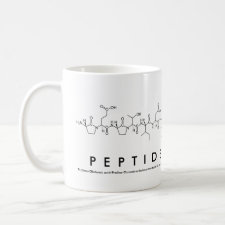
Authors: Titirici MM, Sellergren B
Article Title: Peptide recognition via hierarchical imprinting.
Publication date: 2004
Journal: Analytical and Bioanalytical Chemistry
Volume: 378
Issue: (8)
Page numbers: 1913-1921.
DOI: 10.1007/s00216-003-2445-5
Abstract: Silica particles containing immobilised peptidic templates have been used for the generation of hierarchically imprinted polymers. The pores of the silica mould were filled with a mixture of monomers/initiator and polymerised, followed by dissolution of the silica template. This method leaves behind imprinted polymers with binding sites located at the surface, which are capable of recognising larger molecules with the same immobilised epitope. All the products resulting from solid- phase synthesis of peptides were characterised by elemental analysis, FT-IR spectroscopy and fluorescence microscopy. The hierarchically imprinted polymers generated from these products were characterised by elemental analysis, FT-IR spectroscopy, fluorescence microscopy, scanning electron microscopy (SEM) and nitrogen adsorption, providing evidence concerning the reproducibility of each step. The chromatographic properties of the materials have been investigated and the advantages of the immobilisation method have been proven. The materials exhibit selectivity for their templates and other structurally related dipeptides. Furthermore, the polymers proved to be capable of recognising larger peptides containing the immobilised sequence



Join the Society for Molecular Imprinting

New items RSS feed
Sign-up for e-mail updates:
Choose between receiving an occasional newsletter or more frequent e-mail alerts.
Click here to go to the sign-up page.
Is your name elemental or peptidic? Enter your name and find out by clicking either of the buttons below!
Other products you may like:
 MIPdatabase
MIPdatabase









